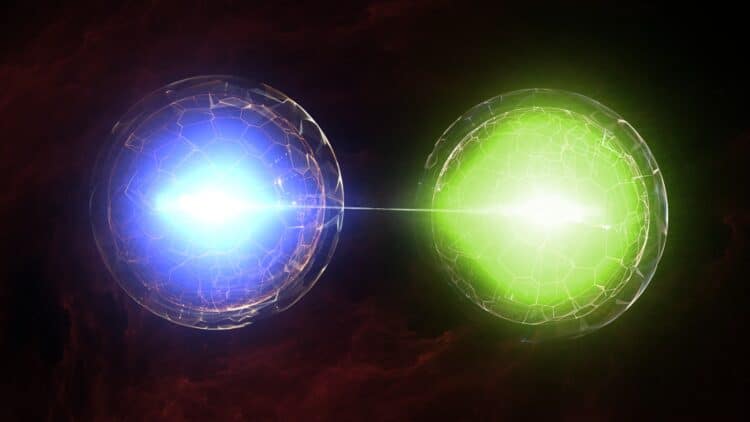Just when we were convinced that the limits of our knowledge of physics had been reached, a team from Hiroshima University came along to prove us wrong. This group of scientists has presented an experimental method for detecting the Unruh effect in the physics journal Review Letters.
It has not yet been detected, but it is a realistic plan with clear electrical signals that will allow it to be measured in the laboratory.
What is phantom heat?
Believe it or not, the quantum vacuum… isn’t completely empty. It has tiny vibrations or “sparks” of energy. If an object crosses this quantum vacuum while accelerating, the vacuum heats up. The famous temperature of a robot increases with acceleration; it is a bridge between relativity (for which Einstein is so well known) and quantum mechanics.
However, it has not always been so easy to detect this heat: to notice 1° Kelvin of this heat, the calculations require absurd accelerations. For decades, it has been impossible to measure it with a simple straight-line acceleration, so no one could have witnessed it, at least not yet.
These two Japanese authors, Haruna Katayama and Noriyuki Hatakenaka from Hiroshima University, have come up with an ingenious idea. Instead of pushing a detector in a straight line, as most scientists before them had imagined, these two Japanese scientists propose spinning the detector in tiny circles within superconducting circuits.
This would allow them to form pairs of magnetic vortices orbiting with a minute radius and reaching a speed with sufficient acceleration to notice this Unruh effect or phantom heat. This should translate into a Unruh temperature of ~1 kelvin (or “a few kelvins”), measurable with current cryogenic technology.
How to carry out this experiment
Since scientists want to feel the phantom heat of the vacuum but are limited by current laboratories, these two scientists came up with the idea of making the detector run at high speeds in circles instead of in a straight line. And thank goodness they did, because the detector must reach an acceleration of 10²⁰ m/s².
To build the “track” where the detector will accelerate, scientists will use a special device called a Josephson junction ring. This is a kind of ring made of superconducting materials that can only function at very cold temperatures. In this ring (or pair of rings; a fluxon and an antifluxon), there are “little things” called fluxons, which are a kind of tiny magnetic whirlpools.
Scientists make the fluxon-antifluxon pair spin very fast inside the ring. Although the radius of the track is tiny, the speed is so high that the centripetal acceleration they feel is enormous. That acceleration should be enough for them, according to Unruh’s theory, to perceive the vacuum as if it had a little heat (~1 kelvin).
The significance of this experiment
Although this may sound like gibberish to most people (or Japanese, in this case), it is an important advance in the field of physics. If they decide to try it, it would be one of the first direct pieces of evidence of how to combine relativity and quantum physics within the same laboratory. But don’t worry, it won’t heat up or catch fire in the laboratory… The observer will only notice that the detector accelerates. If this experiment is successful, it could lead to ultra-precise quantum sensors that would be a step forward for our technology.
Although the experimental method is specific and not at all ambiguous, no detection has yet been reported in the laboratory. The Japanese team is proposing and planning the next steps. For now, we will wait and see if any scientific group has managed to carry out the experiment successfully.
However, don’t think that the Unruh effect is something new. It was already anticipated by others: Fulling (1973), Davies (1975), and Unruh (1976).

